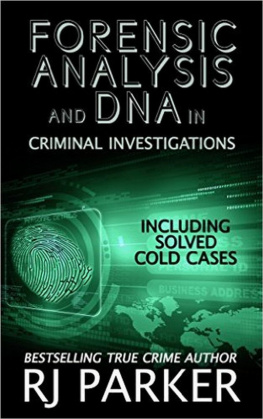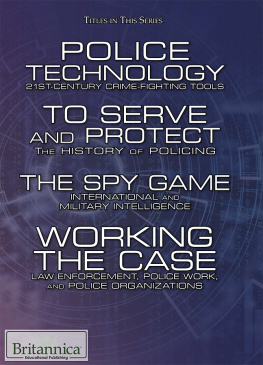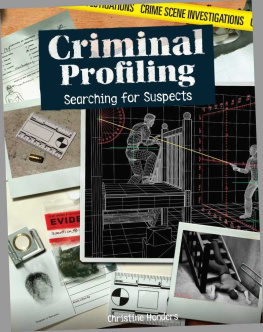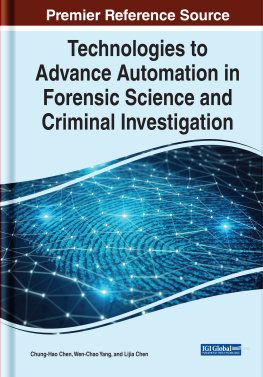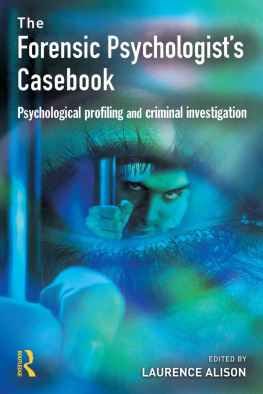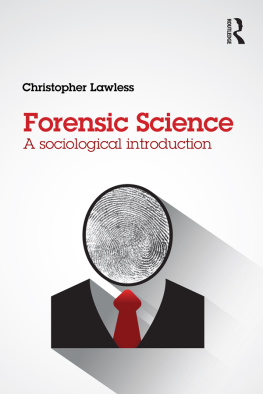Published by
Willan Publishing
Culmcott House
Mill Street, Uffculme
Cullompton, Devon
EX15 3AT, UK
Tel: +44(0)1884 840337
Fax: +44(0)1884 840251
e-mail:
website: www.willanpublishing.co.uk
Published simultaneously in the USA and Canada by
Willan Publishing
c/o ISBS, 920 NE 58th Ave, Suite 300
Portland, Oregon 97213-3786, USA
Tel: +001(0)503 287 3093
Fax: +001(0)503 280 8832
e-mail:
website: www.isbs.com
Robin Williams and Paul Johnson 2008
The rights of Robin Williams and Paul Johnson to be identified as the authors of this book have been asserted by them in accordance with the Copyright, Design and Patents Act of 1988.
All rights reserved; no part of this publication may be reproduced, stored in a retrieval system, or transmitted in any form or by any means, electronic, mechanical, photocopying, recording or otherwise without the prior written permission of the Publishers or a licence permitting copying in the UK issued by the Copyright Licensing Agency Ltd, Saffron House, 610 Kirby Street, London EC1N 8TS.
First published 2008
Hardback
ISBN 978-1-84392-205-6
Paperback
ISBN 978-1-84392-204-9
British Library Cataloguing-in-Publication Data
A catalogue record for this book is available from the British Library
Project managed by Deer Park Productions, Tavistock, Devon
Typeset by GCS, Leighton Buzzard, Bedfordshire
Printed and bound by T.J. International Ltd, Padstow, Cornwall
Acknowledgements
We are extremely grateful to the Wellcome Trust for their generous funding of the research on which this book is based (GR 067153MA). We also owe a large debt to Paul Martin who worked with us on that study, and without whos strong and expert support the project could not have happened. We are indebted to those colleagues who gave continual guidance throughout the research, who have commented on earlier versions of this work, who heard us talk about it and who influenced our thinking on many of the issues we have struggled to clarify.
Accordingly (and in alphabetical order) we want to thank: Peter Ablett, Chris Asplen, Sarah Banks, Fred Bieber, Simon Cole, Robert Dingwall, Troy Duster, Martin Evison, Jim Fraser, Keith Fryer, Robert Green, Erica Haimes, Martin Innes, Sheila Jasanoff, Alec Jeffreys, Steph Lawler, David Lazar, Michael Lynch, Peter Manson, Carole McCartney, Ben Moulton, Alice Noble, Paul Roberts, Tom Ross, Mark Rothstein, John Tierney, Helen Wallace and Brian Willan.
Finally we are grateful to all of the individuals who gave us the benefit of their experience by talking to us in the fieldwork stage of the study. We will not list their names here, but they know who they are.
Earlier versions of some of the material included in this book have been published elsewhere. In particular in the following papers and reports:
Johnson, P., Martin, P. and Williams, R. (2003) Genetics and forensics: a sociological history of the National DNA Database, Science Studies, 16 (2): 2237.
Johnson, P. and Williams, R. (2004) Post-conviction DNA testing: the UKs first exoneration case?, Science and Justice, 4: 7782.
Johnson, P. and Williams, R. (2004) DNA and crime investigation: Scotland and the UK National DNA Database, Scottish Journal of Criminal Justice Studies, 10: 7184.
Williams, R. and Johnson, P. (2004) Circuits of surveillance, Surveillance and Society, 2 (1): 114.
Willliams, R. and Johnson, P. (2004) Wonderment and dread: representations of DNA in ethical disputes about forensic DNA databases, New Genetics and Society, 23: 20522.
Williams, R. and Johnson, P. (2005) Inclusiveness, effectiveness and intrusiveness: issues in the developing uses of DNA profiling in support of criminal investigations, Journal of Law, Medicine and Ethics, 33: 454558.
Williams, R., Johnson, P. and Martin, P. (2004) Genetic Information and Crime Investigation. Report to The Wellcome Trust.
Chapter 1
Introducing forensic DNA profiling and databasing
The recent incorporation of forensic DNA identification technology into the criminal justice systems of a growing number of countries has been fast and far reaching. In developing and using DNA profiling for forensic identification purposes many criminal jurisdictions across the world have followed a common trajectory: initial uses on a case-by-case basis in support of the investigation and prosecution of a small number of serious crimes (most frequently homicides and sexual assaults) have been followed by its extensive and routine deployment in support of the investigation of a wide range of crimes including property and auto crime. The recovery of biological samples from crime scenes and individual suspects, and their comparison with DNA profiles already held in police archives, has become a major feature of policing across Europe, North America and beyond. Nowhere is this more apparent than within the United Kingdom where the police forces of England and Wales, Scotland and Northern Ireland have all incorporated DNA profiling and databasing into the routine investigation of volume crime.
The National DNA Database (NDNAD) of England and Wales is an intelligence database which holds a large collection of DNA profiles obtained from the analysis of tissue samples owned by the Chief Officers of the individual forces who provided the samples. The NDNAD was established on 10 April 1995 as the first of its kind. Until 2005 the database was managed on behalf of the Association of Chief Police Officers (ACPO) by the Forensic Science Service (FSS), an executive agency of the Home Office. Following the establishment of the FSS as a Government Company (GovCo) in that year, custodianship of the database was relocated within the Home Office Forensic Science and Pathology Unit. It is expected to be transferred soon to the new National Policing Improvement Agency (although the FSS still retains operational responsibility for the database). The NDNAD currently remains the largest such national database in the world (it contains the greatest number of individual profiles and also holds the largest proportion of profiles per head of the population of any criminal jurisdiction). It includes DNA profiles which have been derived from biological samples obtained from three sources: from scenes of crime, from individuals suspected of involvement in crime (what have usually been designated as criminal justice samples but, since 2006, have become known as subject samples) and from volunteers (most usually obtained by the police during a mass, or intelligence led, DNA screen).
Crime scene samples are collected wherever potential biological material relevant to an investigation is identified at a crime scene by police scientific support staff or by external specialist crime scene examiners. The police are empowered to collect biological samples for the construction of subject profiles from individuals under a wide variety of circumstances and from different categories of individuals: samples are taken without consent from those arrested for a recordable offence and with consent from volunteers. These forms of collection are supported by a legislative framework originating in 1994 and modified several times since then. All profiles which meet minimum criteria for inclusion are loaded onto the NDNAD.




